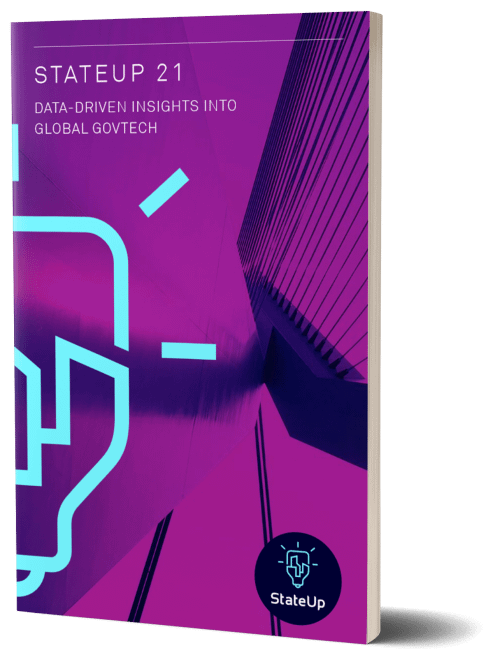Public-Purpose Technology Intelligence
Summary
This information is accurate as of January 2021. For more up-to-date information, access Nebula, our Public-Purpose Tech intelligence platform. Join with our Nebula Community Membership, or upgrade to a Nebula Pro Membership.
- Founded in 2019
- Total Funding: £239,500
- Revenue band: £100-500,000
- Lead investors: European Space Agency Business Incubation Centre, Antler, Katapult
- Office: Stockholm, Sweden (HQ), Oslo, Norway, New York, US.
- FTEs: 1-10
- Key clients/partners: Spacept is partnered with Planet, Airbus, UP42, Skyflox and Sterblue. E.ON is a key client.
- Key execs: Eric Langenskiöld, CEO and Co-Founder: also Executive Advisor Evolvery, Founder and Senior Consultant, BXG, previously Co-Founder Leadfront and Stormfors Digital Agency; Sergiu Iliev, CTO and Co-Founder: MEng Aeronautical Engineering, Imperial College London, also Aerospace Engineering Consultant at Outsmart Insight, Graduate Researcher at Carnegie Mellon University, previously Investment Banking Analyst at CitiBank.
Profile
Powerline-vegetation interactions are a leading cause of wildfires and power outages. A tree falling into a line, a branch sitting across two line conductors– however it happens, vegetation close to energy infrastructure typically poses a safety risk. Energy and utility companies favour preventative risk mitigation, but this does not always work. For example, regular tree trimming falls flat against fast growing tree species. Thus, it is beneficial to also have monitoring mechanisms. However, companies balk at the cost of frequent monitoring; for example, helicopter-based monitoring can cost £3000 per day. Drones are cheaper but their use is being hindered by difficult regulation.
Spacept is an early stage startup working on a cost-effective platform for early warning and rapid response to vegetation-induced powerline disruptions. Its infrastructure inspection software is driven by computer vision analysis of earth observation satellite data. Specifically, the inspection software crunches images of powerline systems, weighing factors like vegetation type, season and infrastructure quality, before providing a form of risk assessment. This remote monitoring allows for a cheaper offering than both drones and helicopters.
The policy response to wildfires is enmeshed in national disaster response and climate change policies. Both areas have been boosted by worsening global weather. For example, Australia’s 2019 wildfire released about 900 million tons of carbon dioxide into the atmosphere; expectations of worse fires have put pressure on the Australian government to set a deadline for net-zero emissions and update its national warning system. Spacept’s solution can help with implementing both disaster response and climate change goals.
Plans
- Spacept plans to launch its API and expand product use cases, including satellite alerts for road and railway lights replacement, and detecting oil deposits and spills across water bodies.
- Spacept also plans to consolidate on its US expansion.
- It is making key hires in business development and sales.
Who Should Speak To This Company
Government Disaster Management Agencies, Power/Utility companies, Energy maintenance companies
Company In Action
Spacept’s product is in development and may change substantially.
Spacept currently has three versions of its product, grouped by cost, kilometres analyzed and frequency of analysis. Gemini costs €7 per kilometre for customers that want a one time analysis of less than 1000 km. Apollo costs €6 per km for a one-time analysis of more than 1000km. Artemis costs €5 per km for recurring analyses of more than 1000km.
Spacept downloads satellite imagery of the client’s infrastructure system from one of Spacept’s providers (including Airbus Defence and Space and the European Space Agency’s Copernicus). This data is analyzed by its computer vision algorithms on AWS’ cloud computing platform. The analysis involves segmenting the image, identifying individual trees and their shadows, and making distinctions between vegetation and energy assets. The machine learning algorithms use the tree shadows to determine their height, using this and other data to make an assessment of encroachment threats. The system also takes season, climate and other potential confounders into account when making a risk assessment.
 Image provided by Spacept
Image provided by Spacept
 Image provided by Spacept
Image provided by SpaceptStateUp View
For CTO Sergiu Iliev, the focus is scale. As a data analytics player, scale equals product refinement–more data and use cases for Spacept’s machine learning algorithms, enabling them to successfully handle even higher volumes. One way Spacept has courted scale is via distributed hiring; it has 38 remote developers across 16 countries. Distributed hiring broadens access to specialized talent and reduces overhead costs; it enabled Spacept to train algorithms faster and more accurately.
But while distributed hiring is pushing the product, it is contributing to a challenge the startup faces–product-market fit. First, customer acquisition in the powerline industry simply takes too long for a Spacept looking to rapidly iterate on product development. Furthermore, Spacept tells us government players in the industry are wary of a young startup with little local presence. Low traction means fewer use cases and slower product refinement.
Spacept is responding in two ways: partnering with startups and broadening its potential applications. Partnerships with Skyflox, which captures earth imagery from airplanes, and Sterblue, which provides granular inspection, expand its offering and customer base. It is also expanding to more linear infrastructure: hydroelectric plants, railways, roadways and pipelines. For example, Spacept is working with University of Cambridge students to scour the ocean for oil leaks from underwater pipelines. Executed properly, both strategies should see Spacept head off powerline-related headwinds.

Get Access To The Full Report
- Discover data-driven insights into key GovTech subsectors and technologies
- Learn how investment into GovTech is changing
- Read the full StateUp 21 member profiles



